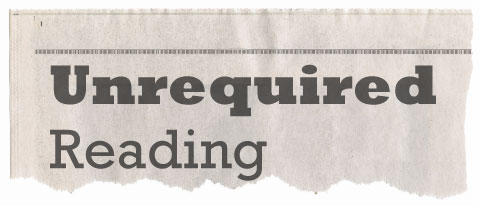 These are some of the things that have caught my attention lately. It’s a more eclectic mix than just the news business, but then so’s life:
These are some of the things that have caught my attention lately. It’s a more eclectic mix than just the news business, but then so’s life:
- The Chilling Effect: How Do Researchers React to Controversy? | PLoS Medicine – "[P]olitical controversies can shape what scientists choose to study. Debates about the politics of science usually focus on the direct suppression, distortion, and manipulation of scientific results. This study suggests that scholars must also examine how scientists may self-censor in response to political events."
- Where the oil comes from: Not from where I thought | Jon Udell – "We’re really close to the point where non-specialists will be able to find data online, ask questions of it, produce answers that bear on public policy issues, and share those answers online for review and discussion. A few more turns of the crank, and we’ll be there. And not a moment too soon."
- Exclusive: Why Reuters Left Second Life, And How Linden Lab Can Fix It | SIA – "Second Life is tolerable as a playground, but enterprise users will never and should never use it for business. Re-focus on the core mission: Keeping the hobbyists happy and converting potential recruits into hardcore (read: fees-paying) users."
- NIH: Banning Fast Food Ads Will Make Kids Less Fat | Advertising Age – "A ban on fast-food advertising to children would cut the national obesity rate by as much as 18%, according to a new study conducted by the National Bureau of Economic Research and funded by the National Institutes of Health."
- The Television-ization Of Newspapers On The Web | Basement.org – It’s not your reliable Times home page with some ads, it’s your reliable Times homepage infested and overwhelmed with an advertisement. The ad not only completely dominates the above-the-fold experience (and my “fold” is generous here, 682 pixels high) but it’s moving around, people are talking (thankfully with the sound turned off) and the whole thing just overwhelms the newspaper reading experience.
- New Haven Independent: Can iTunes Save Newspapers? – NYT reporter on saving newspapers: "So, how is the Times going to pay[…?]
Somehow, the newspaper will have to advertise effectively online, or charge for copies the same way iTunes charges for songs, [NYT reporter Chang] said.
“If you got five million people to pay $1 a week, that would be $250 million a year,” Chang said. Charging for content would make newspapers profitable."
- LIFE photo archive hosted by Google | Google Images – From the 1750s? "Search millions of photographs from the LIFE photo archive, stretching from the 1750s to today. Most were never published and are now available for the first time through the joint work of LIFE and Google.
- A new journalism experiment: Source blocks | The Industry Standard – "I decided to prepare a simple, easy-to-read list of sources consisting of a single paragraph with comma-separated sources. I've found it takes just a minute or two to prepare — I usually build the list as I am writing, or sometimes check my browser history to verify what I've looked at.
It's not perfect. The most obvious shortcoming is the absence of hyperlinks to specific Web pages not mentioned in the body text. Adding links would not only help readers, but would also notify external sources that they are being referenced by The Industry Standard.
However, I have two good reasons for not doing this: The first is it would take too much additional time to manually add the links, and potentially dissuade others from using source blocks. In addition, having too many hyperlinks in a story sometimes signals search engines and automatic news aggregators that the page in question is not an article or a piece of commentary. This can reduce Web traffic, which would be problematic…"
- On the Death and 441-Year Life of the Pixel | Hoefler & Frere-Jones – "Renaissance ‘lace books’ have much to offer the modern digital designer, who also faces the challenge of portraying clear and replicable images in a constrained environment. Ostaus’s alphabet follows the cardinal rule of bitmaps, which is to always reckon the height of a capital letter on an odd number of pixels."